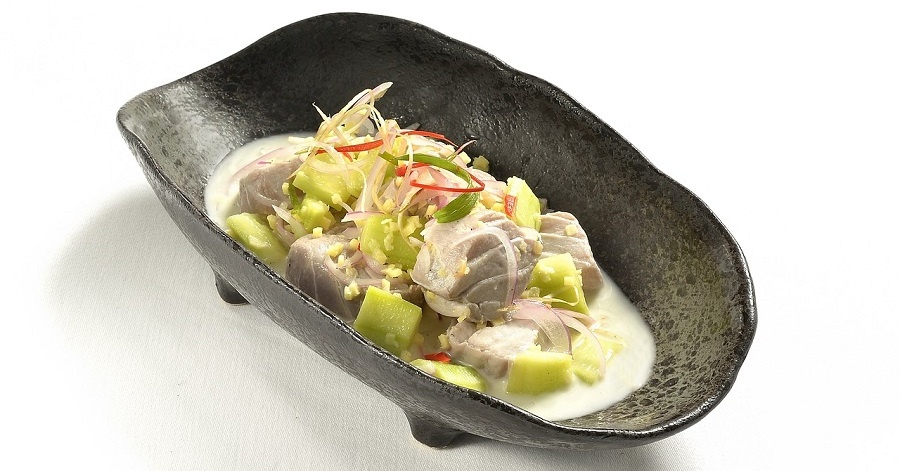Philippine cuisine has been influenced by the Chinese, Spanish, and other cultures, as evident in dishes like lumpia and adobo, for example. However, there are recipes that are distinctly native to the Philippines, like kinilaw, which literally means “eaten raw.”
Kinilaw dishes usually involve fresh seafood mixed with vinegar, lemon, or calamansi. It is quite similar to the Latin American dish ceviche, and is often eaten as appetizers or pulutan (finger food) partnered with alcoholic drinks. Today, we are going to feature a kinilaw dish that is super fast and easy to make… tuna kinilaw, using ahi tuna (a.k.a. yellowfin tuna).

How to Make Tuna Kinilaw
As mentioned earlier, kinilaw usually includes fresh seafood like ahi tuna, which is available in most local groceries or wet markets. The dish also requires vinegar or any citrus fruit. The recipe below uses lemon, although calamansi or local lime may also be used as alternatives.
The key to making delicious kinilaw is the right amount of fresh fish to citrus juice ratio, as well as the amount of time spent to “cure” the fish. Although one hour in the fridge is usually enough, keeping it there for three hours or even overnight will do wonders for the taste!
The tuna recipe below can be prepared in just one hour, though you can extend the “curing” period, of course. It is good for about three servings, so just double or increase the portions if you are cooking for a huge family or group!
Ingredients
- 10 ounces fresh ahi or yellowfin tuna (cubed)
- 3 pieces lemon (juiced)
- 6 pieces chili (chopped)
- 1/4 teaspoon garlic powder
- 1/4 teaspoon salt
- 1/4 teaspoon granulated white sugar
- 1/2 teaspoon ginger powder
- Dash of ground black pepper (optional)
Procedure
- Combine lemon juice, garlic powder, salt, sugar, and ginger powder in a small bowl, then mix well.
- Put the ahi tuna in a large bowl, then pour in the lemon mixture. Toss gently until all of the ingredients are mixed well.
- Add the chili and black pepper, then toss gently again.
- Put the dish inside the fridge for one hour (or longer).
- Serve the tuna kinilaw chilled. Enjoy!
While tuna kinilaw is usually served as appetizer or pulutan, you can also pair it with a plate of hot rice, serving as your ulam (viand). Cool!
Variations of Kinilaw
The above kinilaw recipe features tuna as the main ingredient, but other kinds of fish and seafood can also be used, like bangus (milkfish), tangigue (mackerel), shrimp, squid, and oyster. Take note that when using squid, it needs to be blanched (i.e. placed in boiling water for one minute, then cooled in icy water) to soften the flesh.
Interestingly, the kinilaw method of cooking can also be applied to meat, such as pork, beef, chicken, and even goat meat. In this case, the term “kilawin” (e.g. pork kilawin) is often used to distinguish it from seafood kinilaw. Also, the meat is not prepared raw but boiled or grilled “rare” to “medium rare” — before the vinegar, citrus and other ingredients are mixed in.
Notably, the term kinilaw can also be used to refer to vegetables and fruits that are marinated in vinegar and spices, though they are better known as ensalada (Spanish for “salad”). Examples of these are ensaladang talong (eggplant), pipino (cucumber), ampalaya (bitter gourd), pako (fern), and young papaya.
If you haven’t tried kinilaw before, then it’s about time that you do by trying out the above recipe. Don’t forget to offer some to your Filipino friends and foreign friends! And speaking of Pinoy food, here is a list of Filipino restaurants in Dubai where you can order your favourite dishes!